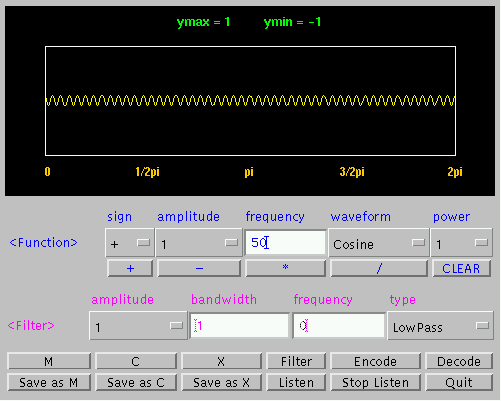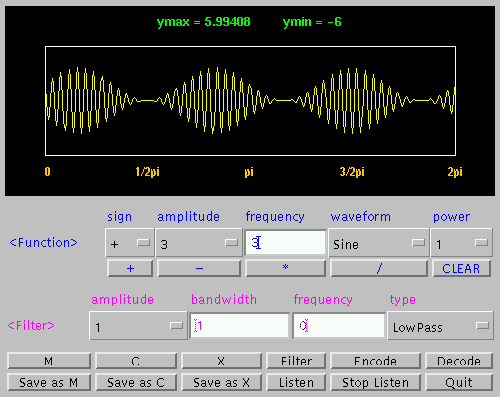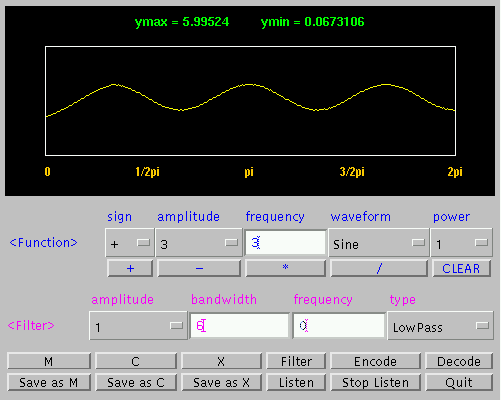
The purpose of this plan is to introduce high school student to a very basic concept in communication namely the standard amplitude modulation.
Let us begin with the JAVA applet.
In the JAVA applet page, the first thing we can do is to create
the message signal as in figure 1. This message signal is just
a sine wave with amplitude of 3 and frequency of 10 Hz.
Fig 1.

We will need to save the message signal in the JAVA applet.
Please click on the "Save as M" button to save the message
signal. This will allow us to encode the message signal in the
carrier wave or modulate it. The next message signal that we need
is a carrier wave to modulated the message signal for efficient
transmission over the communication channel. In figure 2 is the
carrier wave of a cosine wave at a frequency of 50 Hz and amplitude
of 1.
Fig 2.

We will need to save the carrier signal like for the message
signal. This time, we click on the "Save as C" button.
After we saved the carrier signal. We can click on the "Encode"
button to modulate the message signal with the carrier signal.
The finished modulated wave is shown in figure 3.
Fig 3.

The envelope of the modulated message should resemble our
message signal. I should mention that the JAVA applet at this
point will only do 100% modulation. After we transmitted the modulated
wave over the appropriate channel; the receiver side should be
able to recover this message. To recover this message, we choose
a bandwidth that is at least twice the frequency of the message
signal in the "bandwidth" box. Make sure that we have
the low-pass filter choose as the filter. After we did that, we
can press the "decode" button to see if we have the
message back. The recover message is shown in figure 4.
Fig 4.

I will say the two messages are very familiar except at the
beginning since there is a bit of slight delay. Overall, I will
say we have recovered the message.
You may like to try different message signals such as a combination of sine and cosine waves and see if the message can be recover by use the JAVA applet.